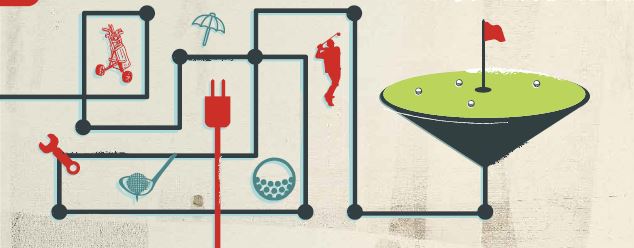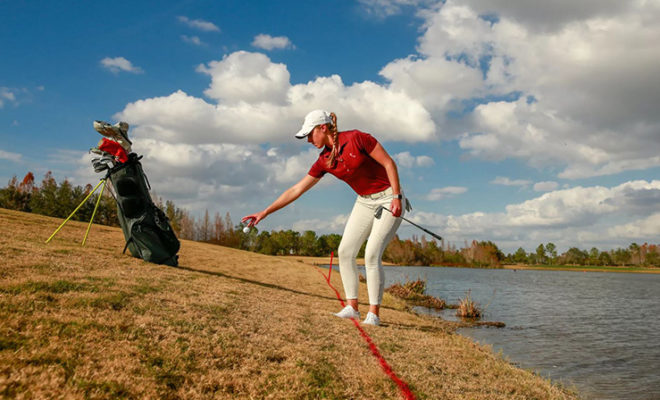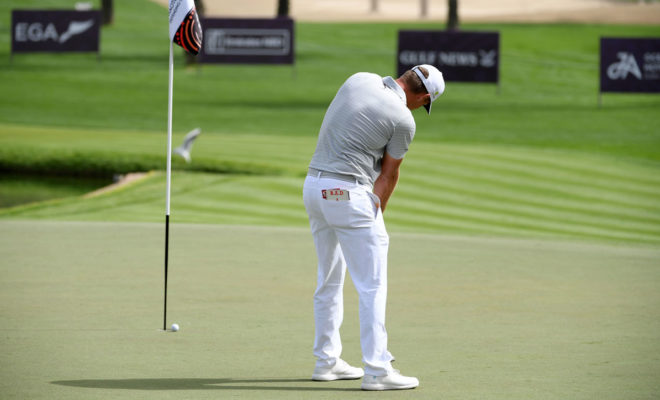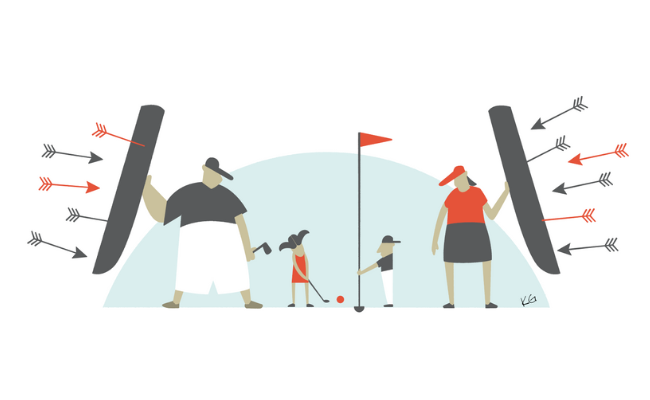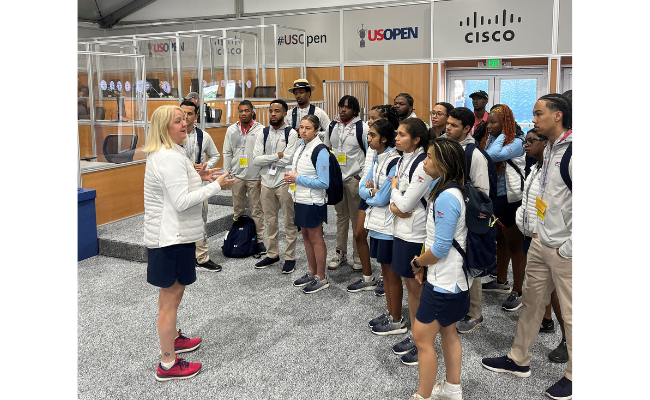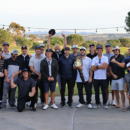In The Name of Distance: The Great Golf Ball Rollback Controversy

On my first visit to Riviera CC’s range for a late-1980s lesson under the kind eye of the great head pro Ron Rhoads, the practice area featured a standard chain length fence. Maybe 10 feet tall.
Over the years this converted par-3 course designed by George Thomas and Billy Bell has seen its fence grow to 90 feet tall. And every February, by permit, a huge extension is added all because the purported greatest athletes in the history of our sport are in town for the Genesis Invitational. Even then they carry modern balls well into the 11th hole, sometimes nearly hitting their unsuspecting peers 350 or more yards away.
Anyone who has ever been hit by projectile surlyn can attest that it’s not pleasant and can be life-altering. All over Southern California, ranges are surrounded by unsightly fences to contain what opponents of updated equipment regulations insist is merely a product of extra core work and better diets.
So how dare we demean the grueling gym hours by tightening up existing rules and regulations for a few elite players with the goal of keeping vast courses relevant, helping pace of play, making the sport safe and maybe even rewarding those who can hit every club in the bag? The notion, as proposed by the USGA and R&A, has prompted end times declarations, coincidentally by people paid to play the equipment.
The governing bodies have recommended a “Modified Local Rule (MLR)” where a tournament-friendly ball is required at events electing to adopt such a pellet in 2026. The ball would have to pass a test that might take eight percent off today’s drives of the super-longest, though more likely five percent for most really good players. And if you are an everyday golfer with average clubhead speeds and one of these balls finds its way into your bag, you won’t notice a difference.
Out of kindness to the $8 billion equipment industry in a $102 billion golf industry, the R&A and USGA dropped a proposal to also slow down the driver face. Even though the companies take these faces right up to the edge when they give them to their players, meaning after not many practice sessions, they’ll be pushing the limits of rules conformity. You will not find these in the barrels at Roger Dunn, contrary to the claims of great joy in buying the exact same thing the pros play.
Golf has long had equipment rules that are now pushed or skirted in the launch-monitor era, as technology evolved too quickly for the regulators to update testing specs. They would only do so to keep our courses safe, relevant and functional. So, after years of study and listening, the governing bodies have decided to reign in the elite player a bit. The organizations even asked the manufacturers about loosening up equipment testing rules for the average golfer and beginners as a trade-off. The companies passed, preferring to market to all of us that we should play what the pros play despite data showing how the elites reap much greater benefits.
Since announcing the pared-down proposal in March, we’ve heard an onslaught of whining, misinformation and comical reaction from people who bear none of the cost burden caused by distance advances. Rickie Fowler said the expense of developing the MLR ball could double the cost of golf for everyone. He was serious. His preferred ballmaker currently makes one ball just for radar-based launch monitors and they charge $70 for a dozen.
There is little doubt that players work out and pursue speed more than at any time in the history of golf. They are also getting injured at a higher rate, and younger players at less-than-enthralling speeds are increasingly discouraged from pursuing what was once an egalitarian sport. You know, one where big hitters Freddie Couples and Greg Norman were just as good as Corey Pavin and Tom Kite. Wasn’t that a great thing?
Launch-monitor data also tells us that the gains purportedly reaped from all those kale smoothies and core-strengthening sessions suddenly dissipate when decade-old drivers and balls are tested. The athletes morph into virtual couch potatoes if you test them with 20-year-old stuff.
The governing bodies are not proposing the tournament ball because it’s fun. They did not get into golf to spend countless meetings working on this or the assorted layers that will arise from policing a ball unlikely to be made with definitive markings as a passive aggressive bit of pouting from the ballmakers.
The USGA and R&A compromised with the Model Local Rule by asking the manufacturers to make balls based on patents and designs already completed. Because golf course footprints cannot keep expanding and bearing the brunt of costs associated with distance jumps. Nor should the elite version of our sport be all about “hitting bombs.” Frankly, it’s boring. The R&A and USGA rarely point out the safety and injury factors, and they rarely highlight some of the dodgy ways rules are bent by clubmakers. If anything, the rule makers are too nice.
Because, do they ask this? If distance is so vital to “growing the game,” how come no manufacturer will make non conforming equipment? Oh, right, because golfers will refuse to buy it. Golfers value their integrity and playing the game “the right way.” But the modern professional seems to be losing that sense of purpose after having been spoiled by more forgiving clubs and the ability to overpower just about any course.
Some players even mock the viewpoints of legends who were far better at the craft than they ever will be. Decades ago, Jack Nicklaus, Tiger Woods and Bobby Jones advocated for a rollback because the footprint of courses should not keep expanding. Tiger has said he would like to see the ball spin a bit more to bring back shot-making. His view is not shaped by anything besides what is best for the game from a playing, safety, pace and spectating perspective.
Which is a reminder that the distance issue is a slow-play driver on all levels of the sport. This year at The Masters, just days before it took twosomes five hours to play the final round, I told a caddie that he spends four hours annually at the Genesis Invitational just walking to and from tees added along with waiting on Riviera’s 10th tee and standing around in the par-5 11th and 17th fairways … places where logjams did not happen as recently as a decade or so ago.
He and his peers lose four hours they could spend lounging, eating or, of course, going to the gym to get stronger to lift that big piece of luggage. This looper was unmoved by any of the aforementioned points in the name of “growing the game” with distance. Thankfully, his job is to keep up and shut up. The governing bodies? Their job is to do what’s best for the game no matter how many forces tell them they are terrible people for taking a few yards off the drives of the top one percent.

